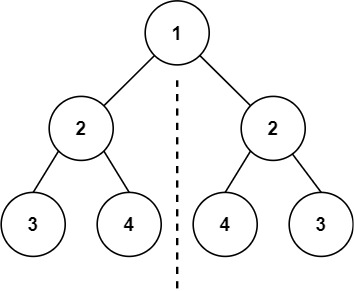232. 用栈实现队列
题目描述:
请你仅使用两个栈实现先入先出队列。队列应当支持一般队列支持的所有操作(push、pop、peek、empty):
实现 MyQueue 类:
- void push(int x) 将元素 x 推到队列的末尾
- int pop() 从队列的开头移除并返回元素
- int peek() 返回队列开头的元素
- boolean empty() 如果队列为空,返回 true ;否则,返回 false
说明:
- 你 只能 使用标准的栈操作 —— 也就是只有 push to top, peek/pop from top, size, 和 is empty 操作是合法的。
- 你所使用的语言也许不支持栈。你可以使用 list 或者 deque(双端队列)来模拟一个栈,只要是标准的栈操作即可。
示例 1:
输入:
["MyQueue", "push", "push", "peek", "pop", "empty"]
[[], [1], [2], [], [], []]
输出:
[null, null, null, 1, 1, false]
解释:
MyQueue myQueue = new MyQueue();
myQueue.push(1); // queue is: [1]
myQueue.push(2); // queue is: [1, 2] (leftmost is front of the queue)
myQueue.peek(); // return 1
myQueue.pop(); // return 1, queue is [2]
myQueue.empty(); // return false
提示:
- 1 <= x <= 9
- 最多调用 100 次 push、pop、peek 和 empty
- 假设所有操作都是有效的 (例如,一个空的队列不会调用 pop 或者 peek 操作)
进阶:
你能否实现每个操作均摊时间复杂度为 O(1) 的队列?换句话说,执行 n 个操作的总时间复杂度为 O(n) ,即使其中一个操作可能花费较长时间。
解题分析及思路:
方法一:字符串
思路:
该题和用队列实现栈类似
所以, 若使用栈操作模拟队列的操作,我们可以使用两种方法:
- 入队列时,将元素入栈,然后将栈中的元素依次出栈,再入栈,这样就可以实现队列的先进先出。
- 出队列时,将栈中的元素依次出栈,再入栈,出栈到仅剩最后一个元素,这个元素就是队列的第一个元素。
type MyQueue struct {
stack []int
}
func Constructor() MyQueue {
return MyQueue{make([]int, 0)}
}
func (this *MyQueue) Push(x int) {
stack := []int{x}
for index := range this.stack {
stack = append(stack, this.stack[index])
}
this.stack = stack
}
func (this *MyQueue) Pop() int {
num := this.stack[len(this.stack)-1]
this.stack = this.stack[:len(this.stack)-1]
return num
}
func (this *MyQueue) Peek() int {
return this.stack[len(this.stack)-1]
}
func (this *MyQueue) Empty() bool {
return len(this.stack) == 0
}
复杂度:
- 时间复杂度:O(N)
- 空间复杂度:O(1),只使用常数额外空间。
执行结果:
- 执行耗时:0 ms,击败了100.00% 的Go用户
- 内存消耗:1.9 MB,击败了27.86% 的Go用户


 ```
输入:nums = [-10,-3,0,5,9]
输出:
```
输入:nums = [-10,-3,0,5,9]
输出: